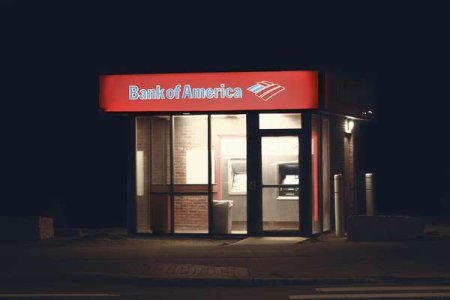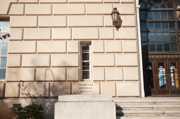Bank of America Is Rejecting THIS Dollar Bill—Could Your Cash Be Denied?
By
Aubrey Razon
- Replies 0
In a move that's set to shake up the way we handle our hard-earned cash, Bank of America has announced a policy that might have you double-checking your wallet. Starting in October, the financial giant, along with other U.S. financial institutions, is tightening the reins on the acceptance of damaged dollar bills.
This change is more than just a preference for crisp, clean notes—it's a strategic maneuver aimed at fortifying the security of our financial system and curtailing the circulation of counterfeit currency.
Gone are the days when a slightly torn or faded dollar bill could slip through the cracks. Under the new guidelines, signs of wear and tear such as rips, cuts, or discoloration from age or moisture exposure will render your dollar bills unacceptable at Bank of America's counters,
ATMs, and even at various commercial establishments.
It's a call to action for consumers to become vigilant inspectors of their own currency, as even minor damage could lead to your cash being turned away.
The driving force behind this policy shift is the ongoing battle against counterfeit currency—a problem that continues to inflict significant financial wounds on the U.S. economy.
Each year, fake bills lead to substantial losses, and by weeding out damaged bills, the hope is to reduce the chances of counterfeit notes being mistaken for legitimate ones.
The ultimate goal? To strengthen the trust and authenticity of the U.S. dollar and make it tougher for counterfeiters to ply their illicit trade.
This isn't a solo mission for Bank of America.
Financial institutions and retailers across the nation are banding together to adopt similar measures, aiming for a unified front in the fight against fraudulent currency.
By establishing a consistent standard for currency acceptance, the process of identifying and removing damaged bills from circulation is expected to become more efficient, reducing transactional headaches for everyone involved.
For the everyday customer, this policy marks a significant shift in cash management. Paying close attention to the condition of your dollar bills becomes crucial, especially when withdrawing from ATMs or receiving change.
Bills that might have previously passed muster despite minor damage will now face greater scrutiny. Ignoring this could lead to frustrating rejections when depositing or spending your money.
But don't fret—there's a silver lining.
Damaged bills aren't a total loss. They can still be exchanged at banks, as long as you adhere to the proper procedures. This means a trip to the bank teller, not the ATM, and keeping an eye on bank hours and locations.
To navigate these changes with ease, here's what you can do:
1. Regularly Inspect Your Bills: Make it a habit to check your cash for any signs of damage. This is particularly important for those who handle large sums or frequently use ATMs.
2. Exchange Damaged Bills Promptly: If you come across a damaged bill, head to your bank to exchange it for a pristine one that won't give you trouble during transactions.
3. Stay Informed: Keep up with the latest updates from your bank regarding currency handling policies.
4. Spread Awareness: Inform friends and family about the new regulations to ensure they're not caught off guard.
Bank of America's new policy on damaged dollar bills is a wake-up call for all of us to be more mindful of the money we carry. It's a step towards a more secure financial environment, free from the worries of counterfeit currency.
So, take a moment to sift through your wallet, and make sure your cash is up to par. After all, in this new era of currency scrutiny, a dollar bill's health is just as important as its value.
 Have you encountered any issues with damaged bills recently? Do you have tips for keeping your cash in tip-top shape? Share your experiences and advice in the comments below.
Have you encountered any issues with damaged bills recently? Do you have tips for keeping your cash in tip-top shape? Share your experiences and advice in the comments below.
This change is more than just a preference for crisp, clean notes—it's a strategic maneuver aimed at fortifying the security of our financial system and curtailing the circulation of counterfeit currency.
Gone are the days when a slightly torn or faded dollar bill could slip through the cracks. Under the new guidelines, signs of wear and tear such as rips, cuts, or discoloration from age or moisture exposure will render your dollar bills unacceptable at Bank of America's counters,
ATMs, and even at various commercial establishments.
It's a call to action for consumers to become vigilant inspectors of their own currency, as even minor damage could lead to your cash being turned away.
The driving force behind this policy shift is the ongoing battle against counterfeit currency—a problem that continues to inflict significant financial wounds on the U.S. economy.
Each year, fake bills lead to substantial losses, and by weeding out damaged bills, the hope is to reduce the chances of counterfeit notes being mistaken for legitimate ones.
The ultimate goal? To strengthen the trust and authenticity of the U.S. dollar and make it tougher for counterfeiters to ply their illicit trade.
This isn't a solo mission for Bank of America.
Financial institutions and retailers across the nation are banding together to adopt similar measures, aiming for a unified front in the fight against fraudulent currency.
By establishing a consistent standard for currency acceptance, the process of identifying and removing damaged bills from circulation is expected to become more efficient, reducing transactional headaches for everyone involved.
For the everyday customer, this policy marks a significant shift in cash management. Paying close attention to the condition of your dollar bills becomes crucial, especially when withdrawing from ATMs or receiving change.
Bills that might have previously passed muster despite minor damage will now face greater scrutiny. Ignoring this could lead to frustrating rejections when depositing or spending your money.
But don't fret—there's a silver lining.
Damaged bills aren't a total loss. They can still be exchanged at banks, as long as you adhere to the proper procedures. This means a trip to the bank teller, not the ATM, and keeping an eye on bank hours and locations.
To navigate these changes with ease, here's what you can do:
1. Regularly Inspect Your Bills: Make it a habit to check your cash for any signs of damage. This is particularly important for those who handle large sums or frequently use ATMs.
2. Exchange Damaged Bills Promptly: If you come across a damaged bill, head to your bank to exchange it for a pristine one that won't give you trouble during transactions.
3. Stay Informed: Keep up with the latest updates from your bank regarding currency handling policies.
4. Spread Awareness: Inform friends and family about the new regulations to ensure they're not caught off guard.
Bank of America's new policy on damaged dollar bills is a wake-up call for all of us to be more mindful of the money we carry. It's a step towards a more secure financial environment, free from the worries of counterfeit currency.
So, take a moment to sift through your wallet, and make sure your cash is up to par. After all, in this new era of currency scrutiny, a dollar bill's health is just as important as its value.
Key Takeaways
- Bank of America and other U.S. financial institutions are introducing stricter regulations regarding the acceptance of damaged bills.
- Damaged dollar bills, showing signs of wear and tear, will be rejected by banks and may not be accepted at commercial establishments.
- The policy seeks to enhance the security of the financial system and reduce the circulation of counterfeit money.
- Customers are encouraged to inspect their cash and can exchange damaged bills at banks following certain procedures.







